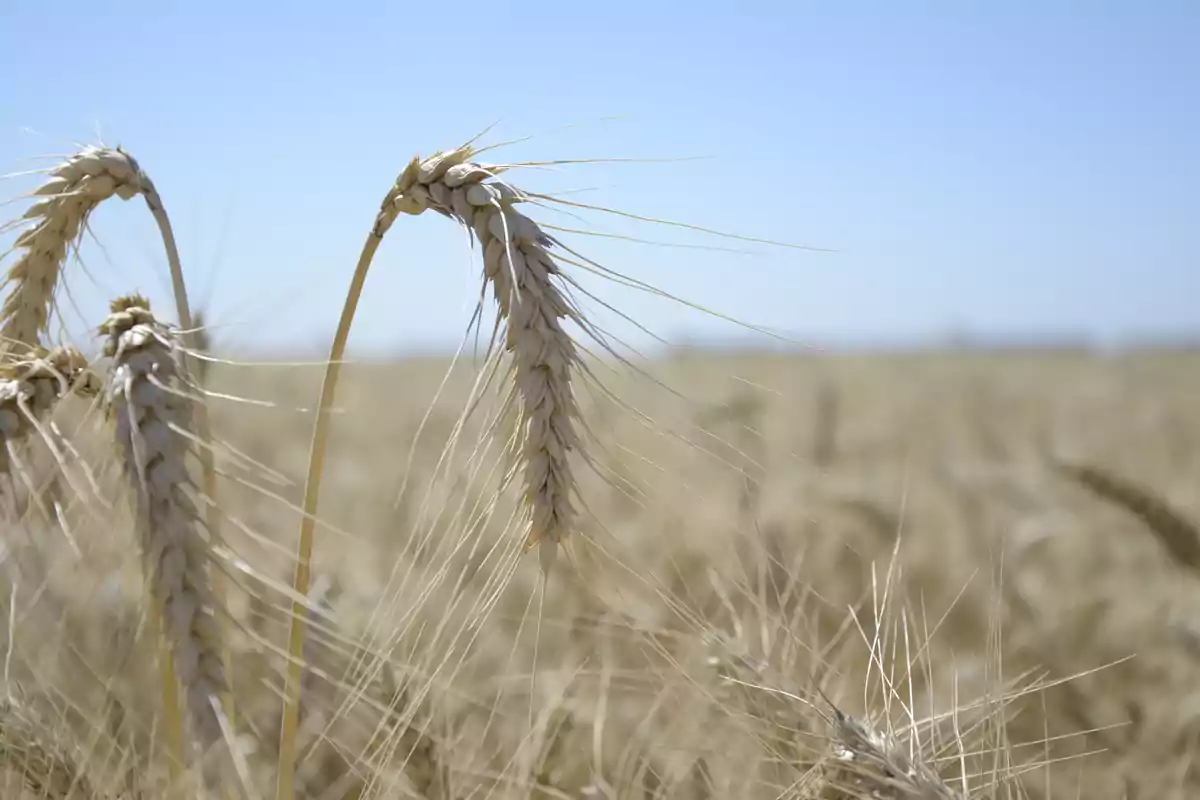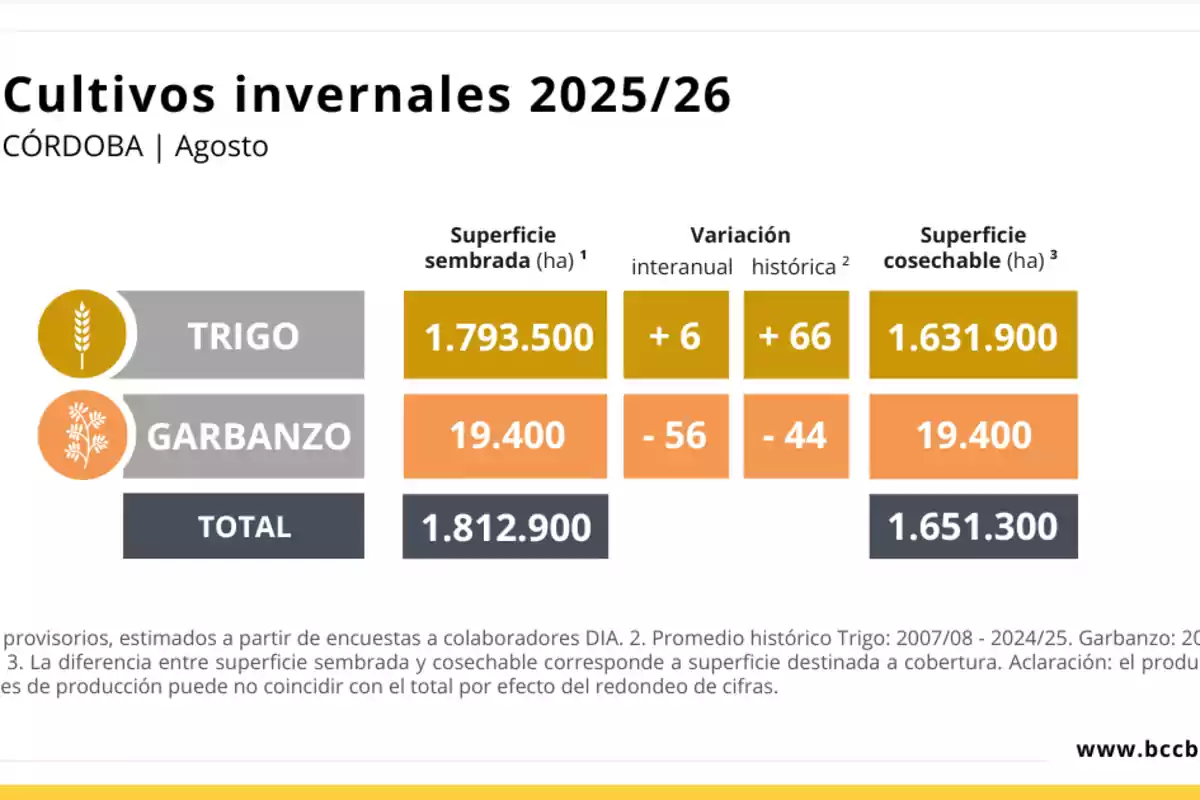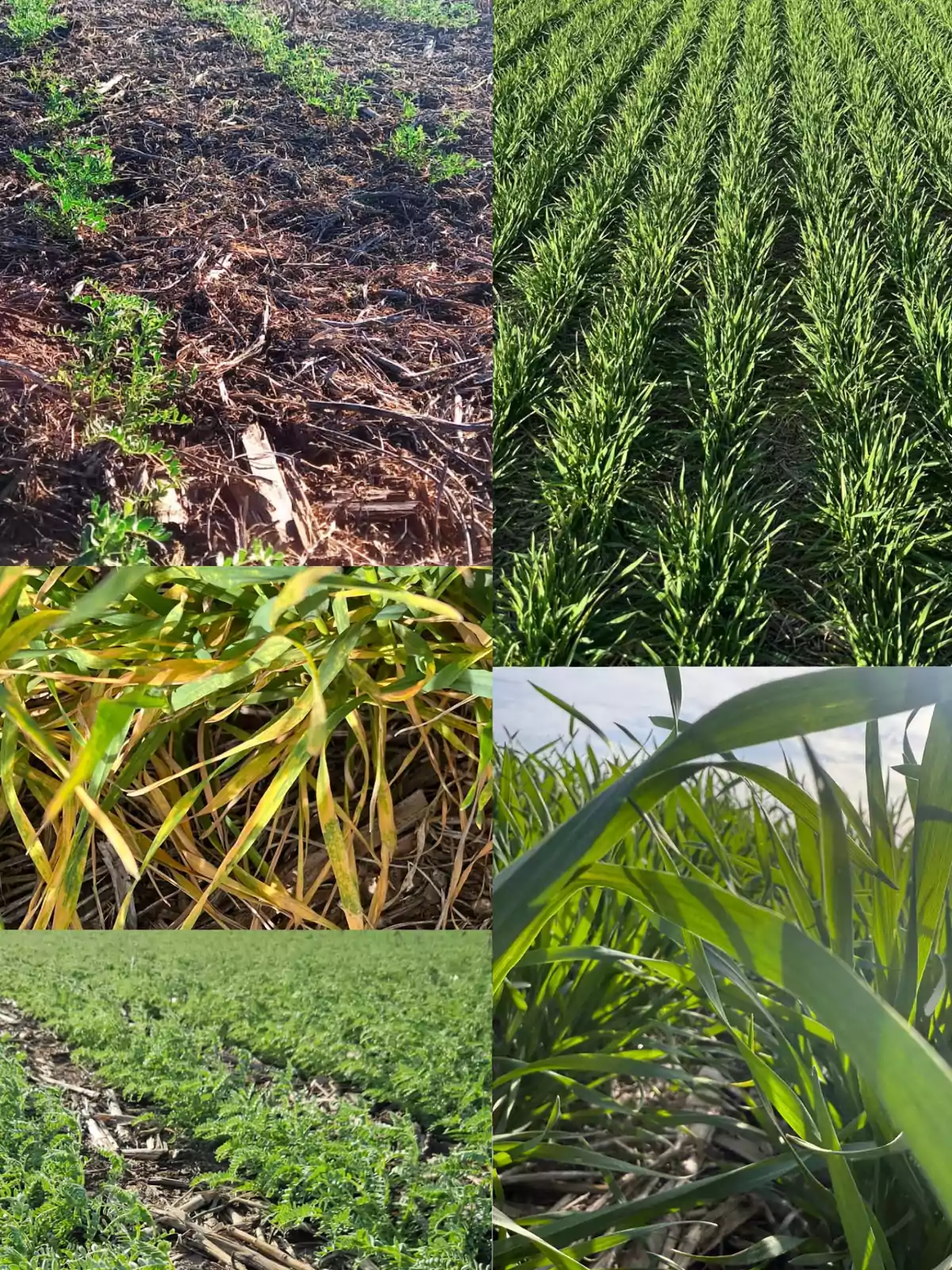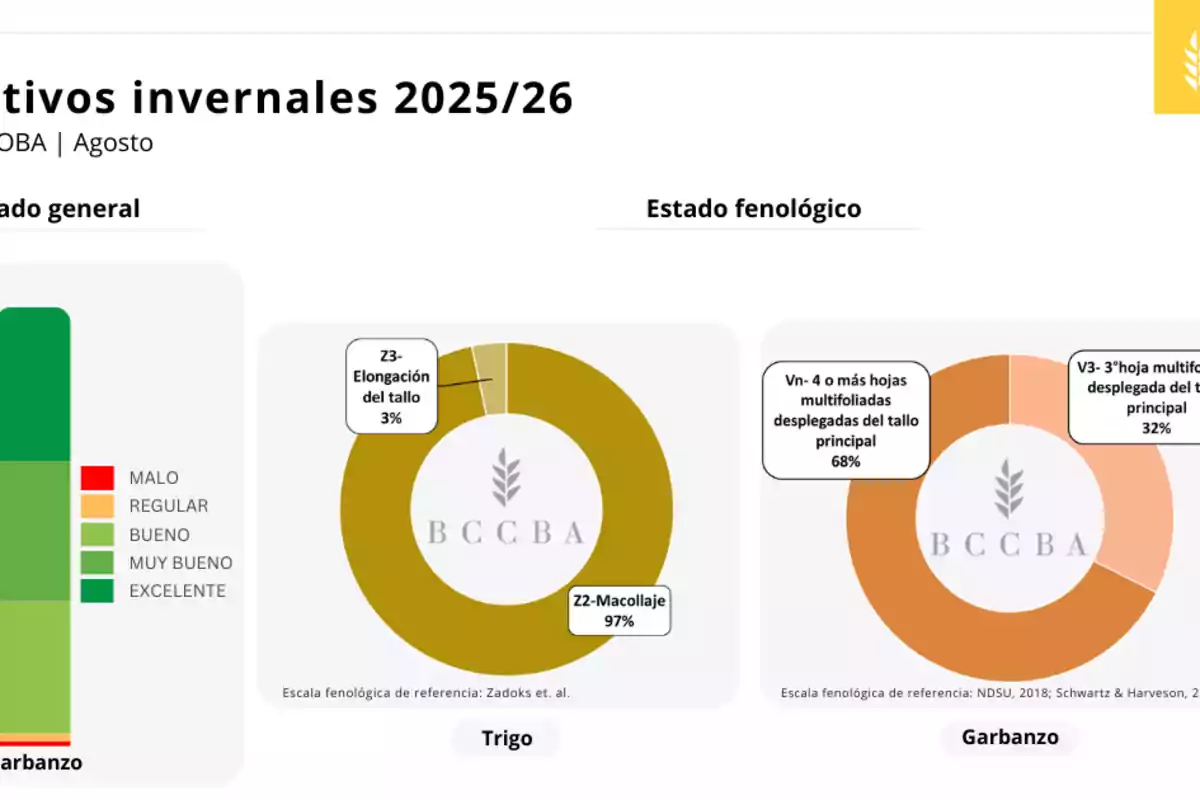
Wheat: after the rains, expectations for a good harvest in Córdoba are rising
Thanks to the weather, both wheat and chickpeas are in very good to excellent condition throughout the province
After the July rains, winter crops in Córdoba were widely favored, which allowed them to counteract the damage caused by previous frosts.
According to the Córdoba Grain Exchange, in the case of wheat, the phenological delay reported in the previous survey was reversed. The sown area is 66% higher than the historical average.
In the case of chickpea, although reports indicate that most of the area sown this season would be under irrigation, it is also noted that the July rains were very beneficial for the rainfed plots.

In general terms, both wheat and chickpea showed a condition ranging from very good to excellent throughout the province, with a lower proportion of area in fair or poor condition compared to the previous survey.

Regarding the phenological stage, wheat was mostly in the tillering stage, with 3% of the plots in stem elongation, entering the stage of maximum leaf production.
Chickpea, meanwhile, had between 3 and 4 multifoliate leaves unfolded on the main stem, about to enter early flowering.

Water availability plays a crucial role at these stages, since the lack of moisture can limit leaf development and, therefore, reduce the crop's potential yield.
Health status of wheat and chickpea in Córdoba
The health status of the crops was favorable, with low or no pest and disease pressure.
In wheat, the presence of green aphid (Myzus persicae) and leaf rust (Puccinia triticina) was recorded, both with low incidence.

In chickpea, only weeds were reported at initial stages, mainly cruciferous species, with no productive implications for the time being.
Good rainfall volume in Córdoba
According to information from the BCCBA meteorological station network, during July, precipitation above the average was recorded in all departments of the province.
In the southeastern area, rainfall was even between 5 and 7 times higher than the historical average.
This water contribution helped to reverse the unfavorable situation with which the winter crop season had started in Córdoba.
More posts: